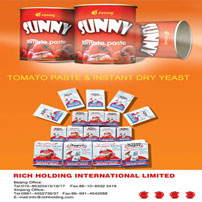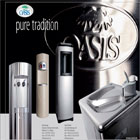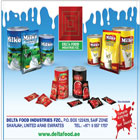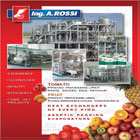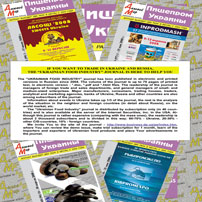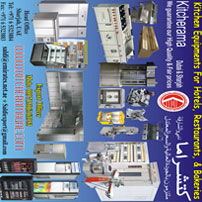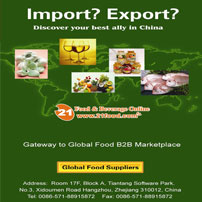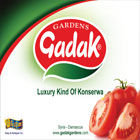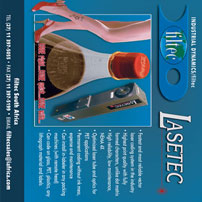

African floriculture heats up
Posted on : Thursday , 7th May 2015
On an average day at the Aalsmeer flower auction in the Netherlands – long considered the flower capital of the world – some 20m stems will change hands. During peak holiday period the trading in the country, which handles around 52% of global volume, is even more frantic.
In the week running up to Valentine’s Day 2015, an estimated 200m red roses and tulips, 100m assorted other varieties and 20m pot plants were exported by truck and air from Amsterdam. Many of those flowers had just arrived from Nairobi, which despatched 45 aircraft freighters to the Dutch capital that week alone.
While few exporters emerged from the global economic downturn unscathed, shippers of price-elastic, discretionary goods bound for Europe were particularly hard hit. Among those on the front lines were Africa’s floriculture traders, who had to contend with weak demand abroad even as production costs at home increased.
A Eurozone debt crisis characterised by rising unemployment and falling living standards meant that most flower buyers were more concerned with making ends meet than splashing out on bouquets.
But, although the global economy has far from fully recovered, both consumer demand and business sentiment are now picking up. That is good news for the many cogs in the machinery of the floriculture industry, which brings together growers, freight forwarders, ground handling agents, cargo operators and retailers into one inter-dependent supply chain.
Global floriculture exports have nearly doubled in value over the past decade to reach $20.6bn per year, and Africa is enjoying a bigger piece of the pie than ever. Kenyan growers have particularly good cause for optimism this year. Having more than doubled their share of global exports to 7% over the past decade – amounting to 120,000 tonnes of flowers annually – the sector received a boost in December, when its duty-free and quota-free access to the European Union was restored under an Economic Partnership Agreement with the East African Community. That will keep costs down for exporters, contributing to projected earnings of 50bn shillings ($546m) in 2015.
North of the border, Ethiopia is also targeting higher returns from floriculture. The country sent 1.27bn roses to the EU in 2012, more than doubling revenues to €131m ($138m) over just four years. Addis Ababa now accounts for 2% of global flower exports, and is aiming to lift horticultural revenues by 51% this year.
While the figures are encouraging, growth in the East African sector is putting strain on existing supply chains. Like any other perishable product, flowers have a shelf life. When harvested, packaged and transported in optimal conditions, many can last up to 14 days. But maintaining low temperatures is vital for longevity, and airborne flower shipments from Nairobi can arrive at Amsterdam anywhere between 10 and 35 degrees Celsius – well above their ideal, low-single-digit transit conditions.
“Once palletised, once you put these flowers tightly together, it’s a living product, it’s breathing, it’s building its carbohydrates, and heat is a waste product,” Jeroen van der Hulst, managing director of quality control company FlowerWatch, told the Air Cargo Africa conference in Johannesburg in February.
Noting that quality controllers at Dutch flower auctions will lower prices by up to 50% for damaged goods, he says that bent stems, uneven openings and a fungal infection known as Botrytis cinerea all directly impact sales values. Poor temperature control is the main culprit.
“The behaviour of the product inside [a heated aircraft pallet] is no different to what happens inside a compost heap,” Van der Hulst warns. “This is what the industry is currently doing: we are flying compost heaps to the market, and just hoping that they arrive there before flowering and rotting.”
Identifying that temperature control is a priority for the industry is, however, the easy part. Convincing all stakeholders across the supply chain to pull their weight – and open their wallets – is much harder.
The so-called ‘cold-chain’ should, in theory, start with the grower. Harvesting in the early morning, when temperatures are low, and packing in a ‘cool room’ will give the flowers the best chance of survival, especially alongside other practices such as ‘pulsing’ in sugar solutions. But, even at this early stage, financial constraints are an issue. Appropriate cooling facilities cost money both in terms of capital outlay and operating expenses. Growers may also be tempted to pack flowers too tightly to reduce shipping costs, inadvertently insulating their product.
Storage conditions during ground transportation and at the airport terminal are equally critical. The respiration rate of cut flowers increases as ambient temperatures rise, pumping yet more heat into the environment. Once certain threshold temperatures are surpassed, the concept of accumulated degree hours comes into play and it becomes near-impossible to cool the product.
The risk is perhaps greatest on board an aircraft, particularly one parked on a sizzling African or Middle Eastern runway for several hours. Ariaen Zimmerman, director of global key accounts at Saudia Cargo, insists that efficiency, rather than “high science,” is the best way to tackle the problem.
“We have rather challenging environmental circumstances in the kingdom of Saudi Arabia,” he says, referring to extreme heat during the carrier’s stopover en route from Nairobi to Amsterdam.
“So we hook up a cooling hose to the aircraft as soon as it lands. Then we handle the aircraft as quick as we can, and it flies off … It’s just about trying to get in and out at the right time; reducing the amount of [ground] handling; and keeping the temperature and the climate on board the aircraft good.”
Zimmerman admits that airborne ‘cool containers’ can improve temperature regulation of flowers, but he says the added costs will inevitably be passed on – either raising prices for consumers, or lowering returns for producers. “At this moment, the most economical way [of transporting flowers by air] is to accept a certain loss in transport logistics,” he concludes.
David Shepherd, head of commercial at IAG Cargo, the cargo division of British Airways’ parent International Airlines Group, is not so sure.
While acknowledging that temperature-controlled containers are primarily used for shipping pharmaceuticals – which have an even lower tolerance to heat fluctuations – he insists that flowers remain a relatively high-value freight type when measured by weight, potentially justifying deployment of specialist facilities.
“It’s about the preparedness of the customer to pay for the technology,” he says. “I don’t see it being beyond the economic position of that type of freight to warrant using ‘envirotainers’ or other [specialist] containers.”
Shepherd adds that the depth of commercial relationships with local partners can impact decisions about allocating space, particularly for airlines such as British Airways, which can only offer belly capacity in passenger jets. “If you have a grower who, through their forwarder, is committing to capacity on your aircraft over a sustained period of time, then it’s useful to develop a relationship,” he explains. “We support a lot of customers in Nairobi who commit to space year-round. So it isn’t always necessarily the highest-yielding cargo [that makes it] on the aircraft.”
Freight forwarders such as Air Connection and producers such as East African Growers therefore have a strong motivation for cooperating closely with air cargo operators to secure space.
But they also have another option – one that will leave air cargo operators, who presently ship 90% of flower exports, feeling cold. Advances in sea freight technology mean that flowers can now be sent around the world in ocean reefer containers set to precisely 0.6 degrees Celsius.
Although seaborne journeys from Kenya to western Europe take 28-30 days, these near-freezing temperatures place flowers in a suspended state that, according to Van der Hulst, allows the goods to arrive in “as good as, or better, [condition] than air freight.”
Given that the cost of shipping flowers between the two markets averages $1.2 per kg by sea, versus $2 per kg by air, according to the FloraHolland cooperative, the industry faces tough decisions about balancing speed with freshness, and cost with quality. Africa’s growers have far more to worry about than simply loading their roses onto trucks.














